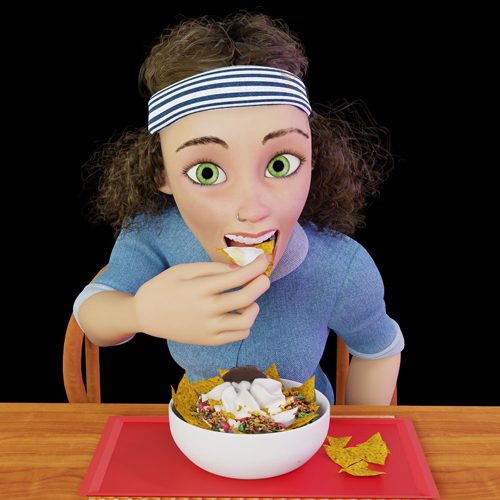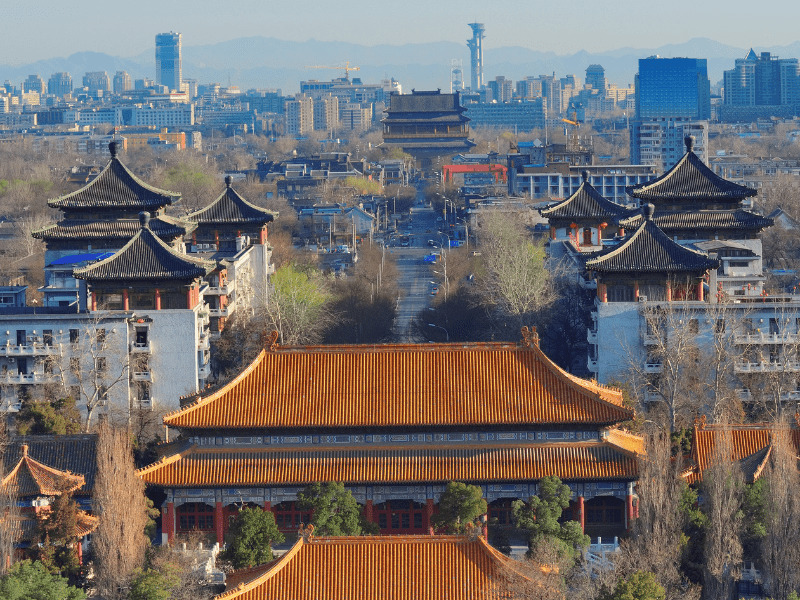China’s capital is a sprawling metropolis of over 20 million people. As I quickly found out, there is a lot to see, do, and eat here. And so much history. Beijing (formerly known as Peking, as in “Peking Duck”) has been the capital of China for over 700 years! A city with this much history, people, and flavors is a joy to explore. Here’s where I went during my visit to Beijing.

Cultural Attractions
Many of Beijing’s top cultural attractions are world-famous, and justifiably so. For Americans – whose country has only existed for about 250 years – the history on display here is staggering.
The Forbidden City
No trip to Beijing is complete without a visit to the famous “Forbidden City.” Located in central Beijing, this complex of imperial palaces was completed during the Ming Dynasty, in 1420 CE. The area got its name because the emperor was the only one who had full access to the palace grounds (don’t worry, it’s no longer “forbidden”). Highlights at this UNESCO World Heritage site include the imposing Wu Gate, the Hall of Supreme Harmony, and the Imperial Garden. This was one of my first stops on my Beijing trip, and I recommend you make a point to stop here as well.

The Great Wall
Does this iconic wall need any introduction? You’ve certainly seen pictures of it, heard the rumors that it can be seen from space (not true, it turns out) and read the story about how this 13,000-mile wall was built to protect China from northern invaders. What you might not realize is how close the wall is to China’s capital. The closest portion of the wall is about 35 miles from downtown Beijing and can be reached by train (plus a twenty or so minute walk). Best of all, many sections of the wall are free to visit, while some have an entrance fee of around $10.
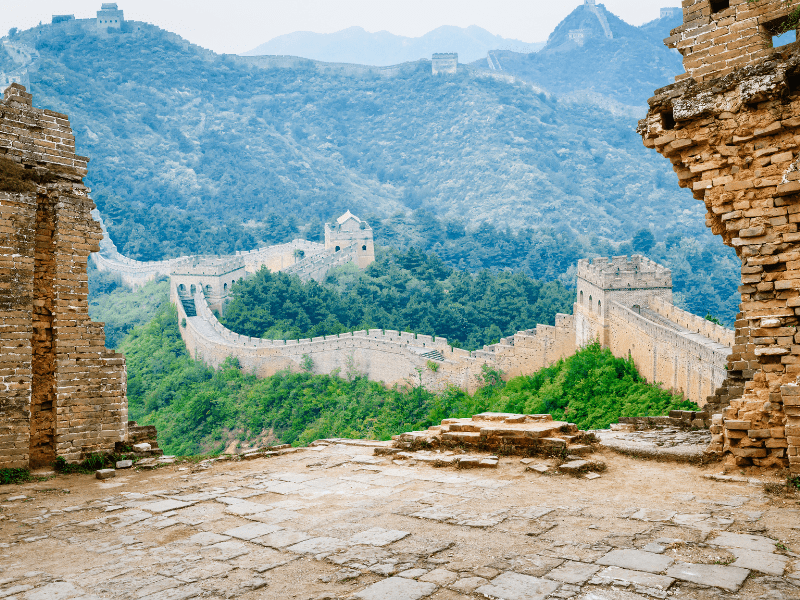
798 Art Zone
My first two picks might date back hundreds of years, but Beijing has plenty of great contemporary cultural attractions as well. One of my favorites is the 798 Art Zone. The “zone” is a cluster of former military factories that have been repurposed to house brilliant art installations. Here, you’ll find murals, sculptures, studios, and galleries. China’s economic reforms of the 1980s paved the way for this quirky transition, and I’m so glad they did. Too bad more military factories can’t be turned into art zones.
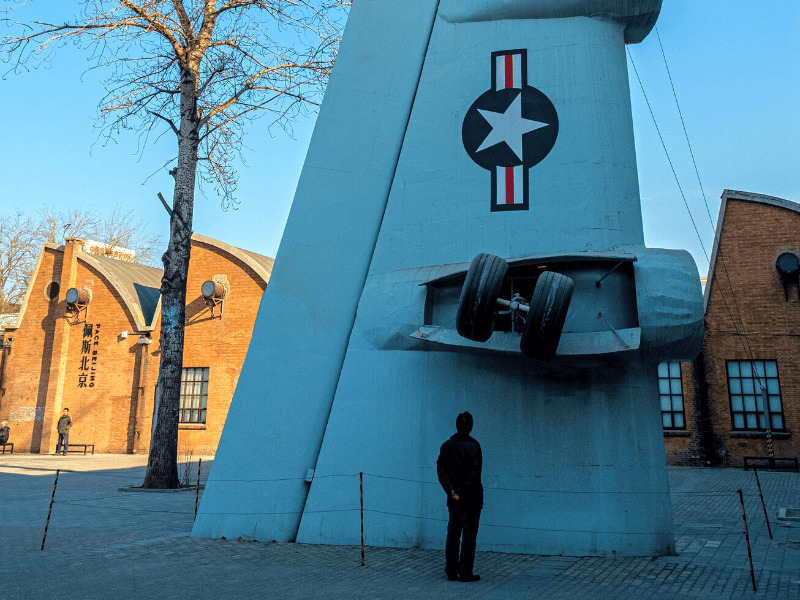
Food
No Chef Jade travel guide is complete without lots of food recommendations. I already wrote about Beijing’s best hot pot places, so I will focus on the many other cuisines that make this city great.
King’s Joy
This vegetarian restaurant near the historic Yonghe Temple has earned an astounding three Michelin stars. For those unfamiliar with the Michelin rating system, three stars means, “Exceptional cuisine, worth a special journey!” I couldn’t agree more! And as a vegan, it warms my heart to see a plant-based restaurant get such high marks. The food at King’s Joy is fresh and seasonal Chinese, mostly sourced from local organic farms. And the atmosphere is pure elegance: the restaurant even features harp performances to accompany dinner service.
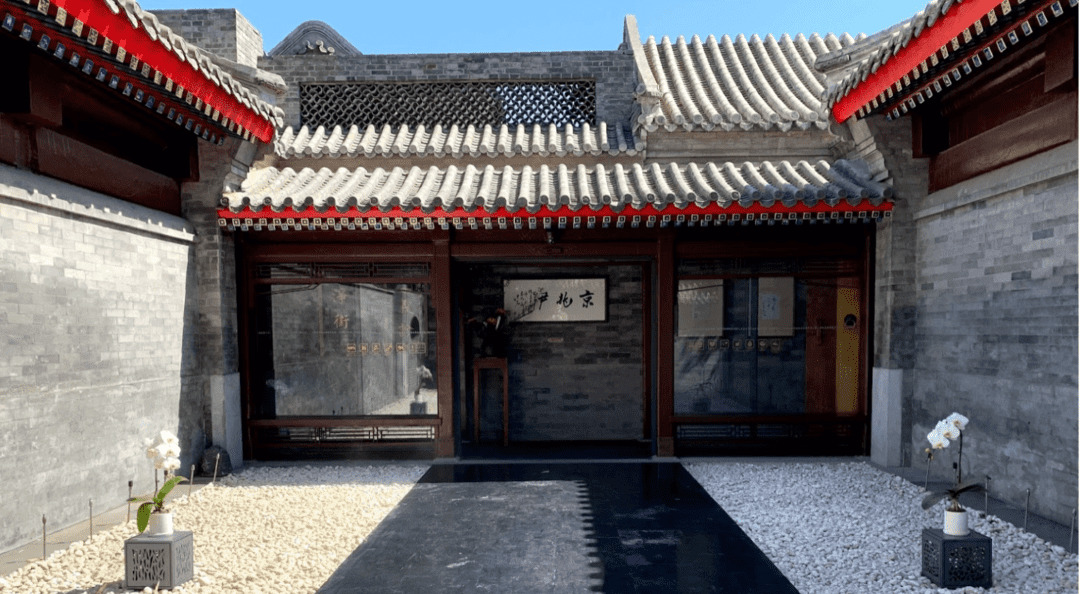
Quanjude
As I indicated before, Peking Duck originated in Beijing and, while I don’t eat it, I can certainly appreciate its popularity. According to many of the locals I talked to, Quanjude is the place to go for this world-famous dish. The restaurant, which operates eight locations around the capital (and several international locations) has been serving Peking Duck since 1864! Nearly 160 years later. It’s still Beijing’s most popular spot for this iconic dish. And Quanjude’s mid-range prices make this sophisticated dish surprisingly affordable.

Country Kitchen
When I am exploring a cuisine, I love trying as many regional variations as possible. And I especially love eating forgotten or unsung dishes. That’s why I am so enamored with Country Kitchen. Located in the sleek Rosewood Hotel, this elegant, Michelin-starred eatery describes itself as “A modern tribute to Northern Chinese cuisine.” Here, Chef Leo Chai has perused ancient texts to recreate many of Imperial China’s forgotten dishes. This is without a doubt the most flavorful history lesson you’ll ever have.

Guijie Street
I love a good progressive dinner and if you’re looking to restaurant hop in Beijing, there is no better place to do it than Guijie Street, located near the historic Dongzhimen Gate. That’s because this quarter-mile stretch of street (also known as “Ghost Street” in reference to the ghostly glow of the lanterns that used to hang here) has over a hundred restaurants serving regional cuisine from across China. And the street has a fascinating history: it all began during the Qing Dynasty (1644-1911), when vendors set up a night market near Dongzhimen Gate. Now, when night falls, Ghost Street comes alive with the din of hungry diners.

Shopping
I did a lot of shopping during my trip to Beijing as well. It’s a great city to shop in: whether you are looking for great deals or high-end fashions, Beijing has got you covered. In Beijing, shopping is all about hitting the streets. Many of the main thoroughfares here provide a unique and comprehensive shopping experience. Here’s where I shopped during my trip to China’s capital.
Wongfujing Shopping Street
Wongfujing street is one of the most famous shopping streets in Beijing, as well as one of the oldest. You will find many of the city’s largest malls and department stores – like the massive Beijing Department Store – on Wongfujing. But you can find plenty of unique and historic shopping experiences here as well. Since I love tea in just about any form, I had to stop by Wuyutai Tea Shop, which has been around since 1887. And if you think that’s old, you need to check out Yong’an Tang Herb Store, which has been selling herbs and traditional Chinese medicines for nearly 600 years!
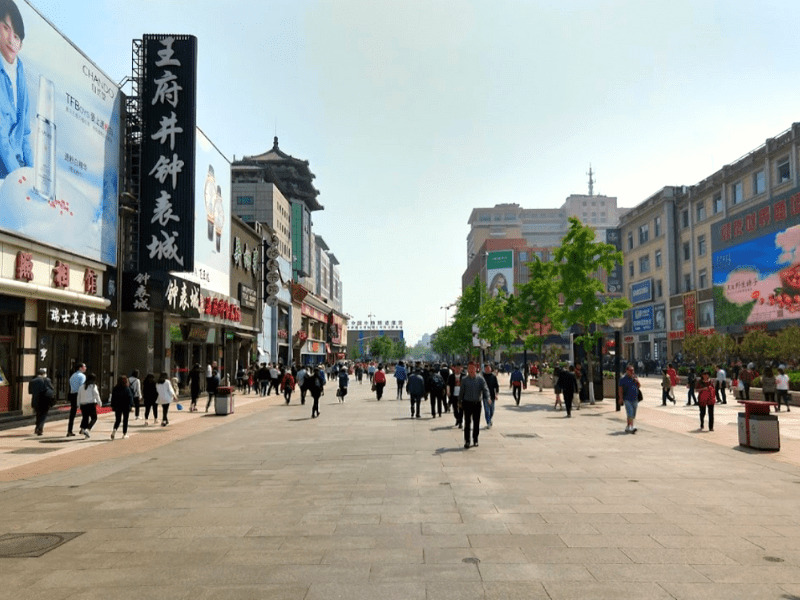
Qianmen Street
Located near Tiananmen Square and the Forbidden City, Qianmen is one of the most convenient shopping streets for those staying near the city center. The ornate ancient buildings on this pedestrian-only street hold independent shops selling everything from clothes, to jewelry, to crafts, to food. And, for added charm and convenience, a historic trolley runs the length of Qianmen. Even if you don’t plan on buying anything, this is a great spot for a stroll.
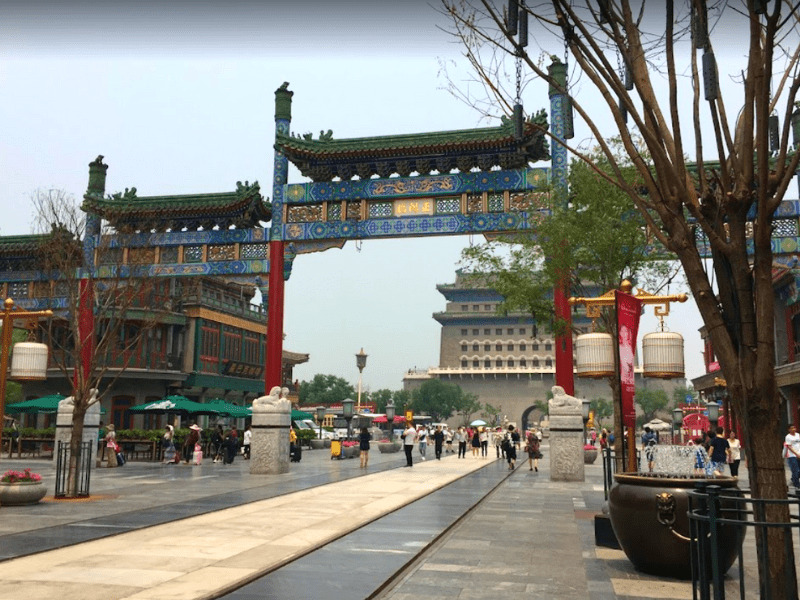
Nanluoguxiang
At only 800 meters long, Nanluoguxiang is small but mighty. Or small, but beautiful, I should say. I couldn’t snap enough photos of the single-story, ancient-style buildings that line both sides of this historic lane (known in China as a hutong). Many of these charming buildings hold shops selling crafts and trinkets, so this is a great place to buy souvenirs for the folks back home. It’s also a good spot to hone your haggling skills. Mine still need some serious work, but I was able to score some great bargains.

Nightlife
While Beijing’s nightlife hasn’t achieved the legendary status that Hong Kong’s or Shanghai’s has, there is still plenty to do after hours in this teeming metropolis. Here’s where I spent my nights in Beijing.
Houhai Bar Street
Conveniently, Houhai Bar Street runs right next to the aforementioned Nanluoguxiang. Shop on one street, drink on the other. Like Nanluoguxiang, this street is a beautiful hutong, made more so because it borders an artificial lake. Here, you’ll find bars, clubs, restaurants, karaoke, and live music. Being a jazz aficionado, I loved visiting East Shore Live Jazz Café, one of the few jazz clubs in Beijing.
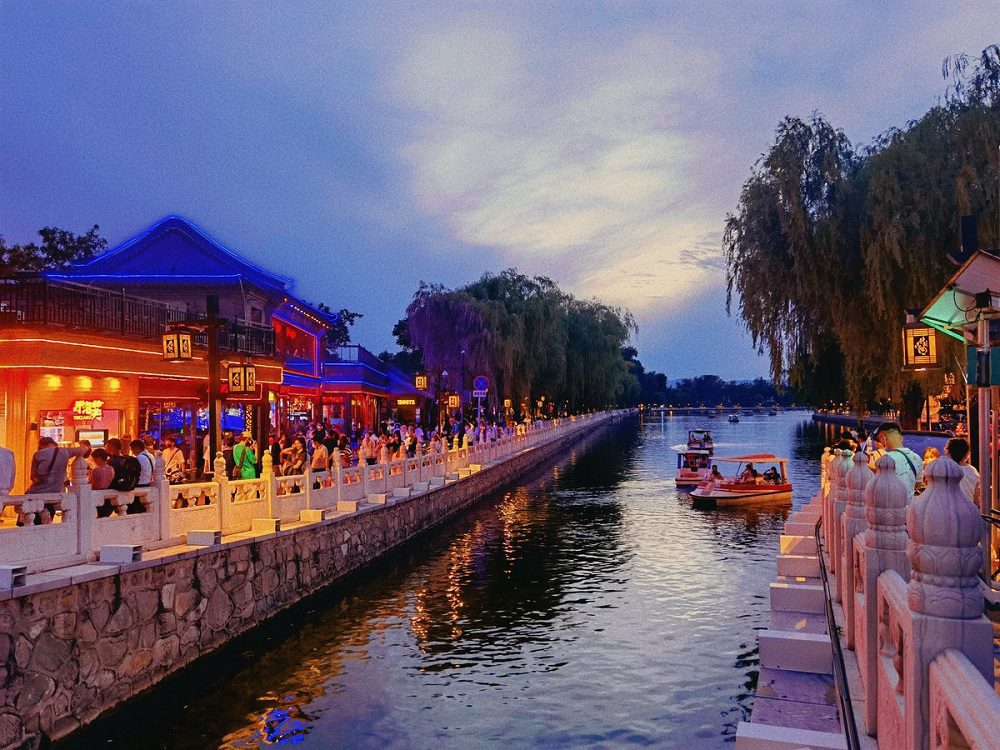
Enjoy The Show
I love live performance of just about any kind, and Beijing does not disappoint. Beijing Opera (also known as Peking Opera) is a world-renowned artform that combines singing, dancing, acrobatics, mime, and highly stylized make-up and costumes. You can catch an evening show at several venues throughout Beijing, such as the Liyuan Theater or the larger, more contemporary Chang’an Grand Theater, both located in central Beijing.
Chinese acrobatics is another local artform that has captured the hearts of audiences around the world, and Beijing’s Chaoyang Theater – east of the city center – is one of the best places to see it. The theater hosts twice-nightly acrobatics performances at 5:15 and 7:15. The incredible skill and imaginative choreography on display here took my breath away.

Till We Meet Again, Beijing
Honestly, the whole city took my breath away: from its diverse array of world-class restaurants, to its vast history, to its amazing nightlife and performances. China’s capital has something for everyone, and is an essential stop on any tour of China. I got a lot out of my trip to Beijing, but there is still so much I haven’t seen, or tasted. A return trip is definitely in my future.
If you enjoyed this article or have suggestions on how we can improve it, please leave us a comment below. Also, make sure to check out other articles I’ve created or stories I’ve written about food culture – here.
